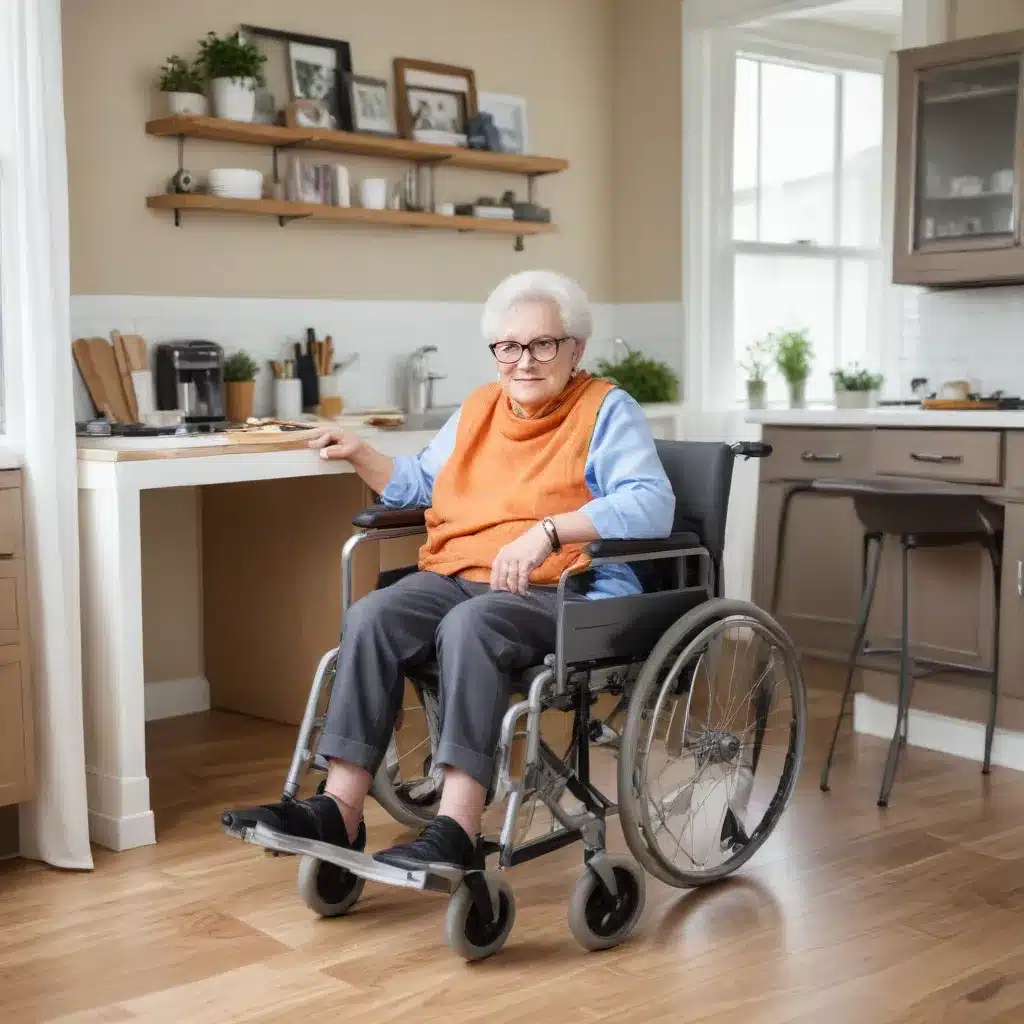
As an experienced home improvement consultant for Reluctant Renovator, I’ve come to understand that the key to a successful aging-in-place renovation lies in thoughtful planning and a holistic approach. Aging in place is the ability to live in one’s own home and community safely, independently, and comfortably, regardless of age, income, or ability level. By incorporating accessibility features and universal design principles, you can create a home that evolves with your changing needs and empowers you to maintain your independence for years to come.
Aging-in-Place Design Considerations
Home Modifications for Accessibility
When it comes to aging-in-place design, the kitchen and bathroom are often the primary focus areas. These high-traffic spaces present unique challenges, but with careful planning, you can transform them into functional and safe havens. Start by evaluating your current floor plan and considering widening doorways, removing walls to create a more open-concept layout, and ensuring smooth transitions between rooms to accommodate mobility devices like walkers or wheelchairs.
Another crucial aspect is eliminating tripping hazards. Choose flooring materials that are slip-resistant, with a low sheen to reduce glare. Opt for softwood species like pine or cedar, which offer better cushioning than harder hardwoods. Avoid area rugs, raised thresholds, or any sudden level changes that could increase the risk of falls.
Assistive Technologies and Devices
Incorporating the latest assistive technologies can significantly enhance the functionality and accessibility of your kitchen. Consider installing motion-activated lighting in cabinets and pantries, which automatically illuminate when the door is opened. Complement this with strategically placed rocker light switches that are easy to operate. For added convenience, explore smart home systems that allow you to control lighting, appliances, and even door locks from your smartphone or voice assistant.
Inclusive Design Principles
When planning your aging-in-place renovation, keep in mind the principles of universal design, which aim to create spaces that are usable by all people, to the greatest extent possible, without the need for adaptation or specialized design. This approach involves designing for a wide range of abilities, preferences, and needs, rather than catering to a specific user profile.
One fundamental element of universal design is countertop height. The ADA recommends that all or a portion of kitchen countertops be set at 28 or 30 inches to accommodate wheelchair users. Pair this with easy-to-grasp cabinet and drawer pulls that are free of sharp edges.
DIY Accessibility Hacks and Solutions
Low-Cost Home Adaptations
Aging-in-place renovations don’t have to break the bank. There are numerous budget-friendly modifications you can tackle yourself to enhance accessibility and safety. Consider swapping out standard doorknobs for lever handles, which are easier to operate for those with limited dexterity. Install grab bars in the bathroom, strategically placed near the toilet, shower, and tub to provide extra stability and support.
Repurposed Household Items
Get creative with everyday household items to customize your home and improve functionality. For example, using non-slip shelf liners in cabinets and drawers can prevent items from sliding around. Repurpose shower curtain rods as towel bars or to hang utensils in the kitchen, ensuring everything is within easy reach.
Customized Mobility Aids
If you or a loved one requires the use of a walker or wheelchair, you can make simple DIY modifications to improve comfort and safety. Attach pool noodles to the walker legs to create soft, cushioned grips. Repurpose an old kitchen cart or side table to serve as a mobile work surface that can be easily maneuvered around the kitchen.
Empowering Older Adults
Enhancing Independence
By incorporating aging-in-place design elements, you can empower older adults to maintain their independence and continue living in the comfort of their own homes. Thoughtful features like pull-out drawers, lazy susans, and height-adjustable shelves in the kitchen can make it easier to access frequently used items without relying on assistance.
Fostering Socialization
An aging-in-place renovation can also enhance social connections by creating a more family-friendly and inclusive environment. An open-concept floor plan allows older adults to remain engaged with loved ones while preparing meals or entertaining guests. Strategically placed seating areas in the kitchen can encourage conversations and shared experiences.
Promoting Health and Wellness
Prioritizing accessibility and safety in your home can have a profound impact on the physical and mental well-being of older adults. By reducing the risk of falls and injuries, you can help prevent costly and debilitating incidents that often lead to a loss of independence. Additionally, a well-designed, eco-friendly kitchen can promote healthier eating habits and encourage older adults to stay active and engaged in daily tasks.
Practical Guidance and Resources
Planning for the Future
When embarking on an aging-in-place renovation, it’s important to consider your long-term needs and goals. While your current abilities may not require extensive modifications, thinking ahead can save you time, money, and hassle in the future. Consult with a design-build professional who specializes in universal design and accessibility to help you create a comprehensive plan that evolves with your changing needs.
Finding Reliable Contractors
Locating reputable contractors who are well-versed in aging-in-place design principles can be a crucial step in your renovation journey. Seek out contractors who have experience working with older adults or individuals with disabilities. Check their references, review their portfolios, and ensure they are up-to-date on the latest ADA guidelines and accessibility standards.
Navigating Funding Options
Aging-in-place renovations can come with a significant price tag, but there are various funding options available to help offset the costs. Explore local and state-level grants or tax credits that may be available for accessibility-focused home modifications. Additionally, some home equity loan programs or reverse mortgages can provide the necessary financing for your project.
By incorporating thoughtful aging-in-place design elements and DIY accessibility hacks, you can transform your home into a safe, comfortable, and empowering environment that allows you to thrive and maintain your independence for years to come. For more inspiring home renovation ideas and practical tips, be sure to visit Reluctant Renovator.



